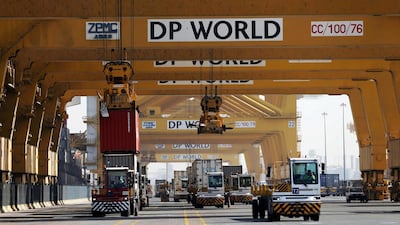Sovereign development funds reacted most quickly to acquire strategic assets at the height of the Covid-19 pandemic, in contrast to the 2008 financial crisis when savings funds bought multibillion-dollar stakes in distressed financial institutions, a new report found.
In the 12 years between the financial and health crises, the number of sovereign wealth funds grew to 115 with $9 trillion of assets under management, up from 90 entities with $4tn of assets, according to Global SWF's 2021 annual report titled State-owned investors in a post-pandemic age.
Development funds including Abu Dhabi's Mubadala, Saudi Arabia's Public Investment Fund, the Russian Direct Investment Fund and Singapore's Temasek led the way this year, snapping up stakes in companies affected by the pandemic such as entertainment and travel but also in healthcare and technology as long-term investments.
"In terms of the Middle Eastern funds, the landscape has changed significantly in the past 12 years and we expect it to keep evolving in the next decade. If 2008 brought a lot of opportunities to savings funds like [Abu Dhabi Investment Authority, the Kuwait Investment Authority and others], 2020 was the year for strategic/development funds such as Mubadala and PIF," Diego Lopez, managing director of Global SWF and the report's co-author, told The National.
Sovereign Wealth Funds (SWFs) and Public Pension Funds (PPFs) ended the year with all-time high assets under management of $9.1tn and $18.4tn respectively, benefitting from an uptick in both equity and fixed income markets because they hold three-quarters of their portfolios in liquid assets like stocks and bonds, the report said.
However, their investment activity "contracted significantly" in 2020 due to difficulties in signing off on proposed acquisitions without physical meetings and caution among some SWFs that could still face capital calls to cover fiscal deficits.
Overall investments by SWFs dropped by 33 per cent year-on-year to $83.4 billion in 277 transactions, while capital deployed by PPFs slightly increased in value and volume, up to $76.1bn in 218 deals, according to the report.
While capital flows came to a sudden halt in March during the Covid-19 outbreak, funds adapted to the new normal and accelerated their activity in the third and fourth quarters.
The largest single transaction in 2020 was Dubai World's repurchasing 20 per cent of DP World in February, it said. The second largest was the investment by Singapore's GIC and others into Abu Dhabi National Oil Company's gas pipeline network. Other major deals included Mubadala's contribution to a $12bn Apollo-backed private credit platform.
Singapore's GIC was the most active state-owned investor in 2020 by capital deployed, according to the report. Mubadala was in the top five with $11.5bn in 31 investments. PIF was also significantly active, especially in the second and third quarters, buying and selling US-listed equities and exchange-traded funds.
PIF, which was among the top 10 most active state investors, has seen its assets under management grow to more than $360bn in 2020, the organisation said last month.
"PIF has a long-term financing strategy built around four clearly established sources of funding, including capital injections and asset transfers from the government; retained investment returns; and loans and debt instruments," Yazeed Al-Humied, PIF’s head of local holdings investments, said in an interview with the New York-based industry data specialist.
In terms of targeted sectors, more than a fifth of the deals sealed in 2020 were in technology, media and telecommunications. Healthcare saw a significant rise in interest during the pandemic with a total of 41 investments into businesses pursuing vaccines and biotech.
Real estate and infrastructure saw a decrease in the number of deals related to real assets, from almost half in 2015, to just over a third in 2020.
Alternative assets are witnessing a much higher allocation by both SWFs and PPFs, the report said, as investors search for returns in an environment where much of the world is witnessing negative real yields.
"Just like their global peers, Middle East funds have grown increasingly sophisticated and are now spotting the key trends to be invested in. That includes private credit as an asset class, China and India as a region and technology as an industry," Mr Lopez said.
Looking forward, Global SWF projects that in the next 10 years, SWFs will grow in size to $16.2tn by 2030, with PPFs rising at an even faster rate to $34.2tn. Altogether, the state-owned investors sector is set to exceed $50tn by 2030.
SWFs are expected to keep allocating more capital into alternatives over the next decade, it said. Private equity and debt will be the most popular choices, with the possibility of SOIs becoming direct lenders.


